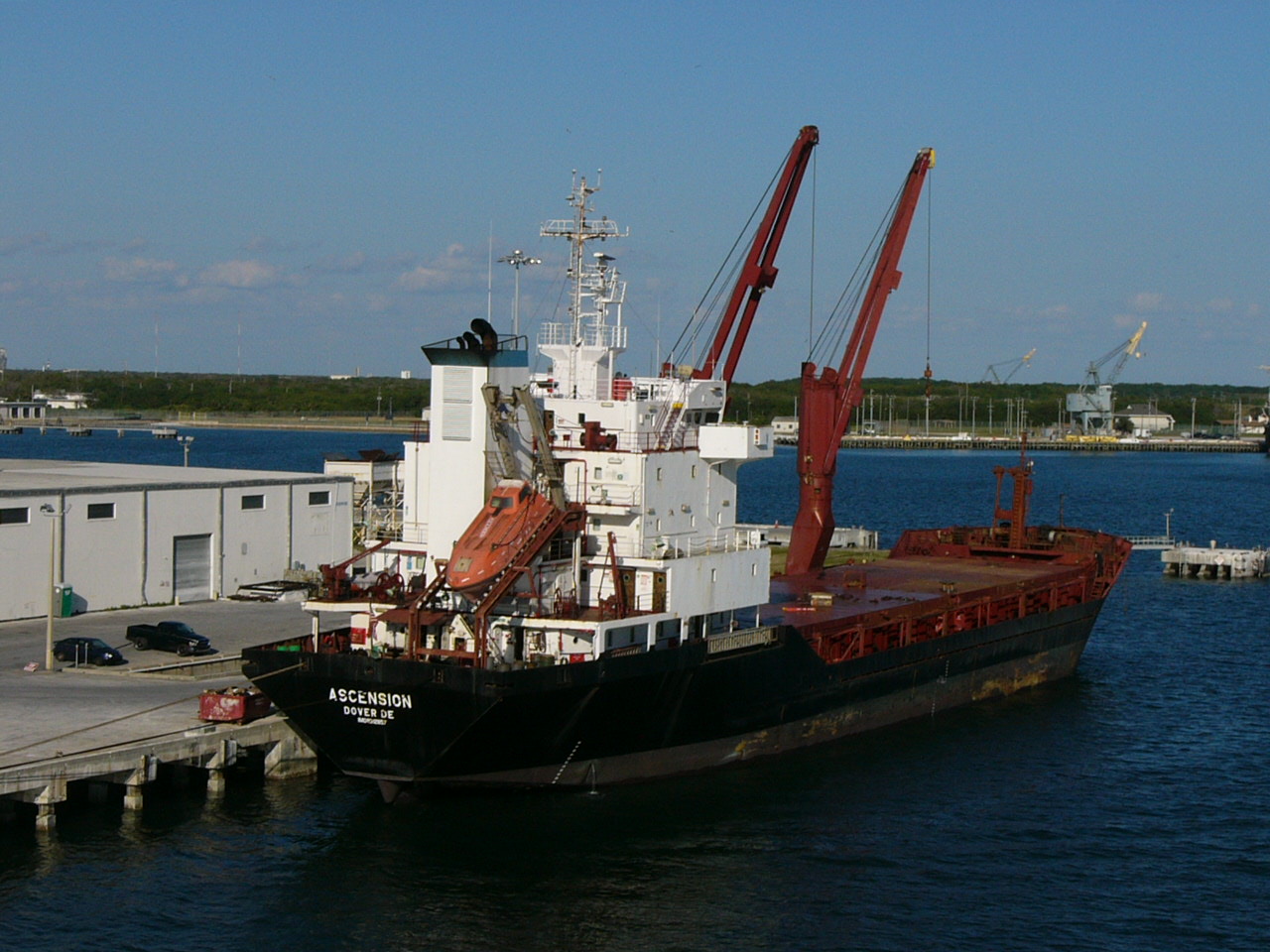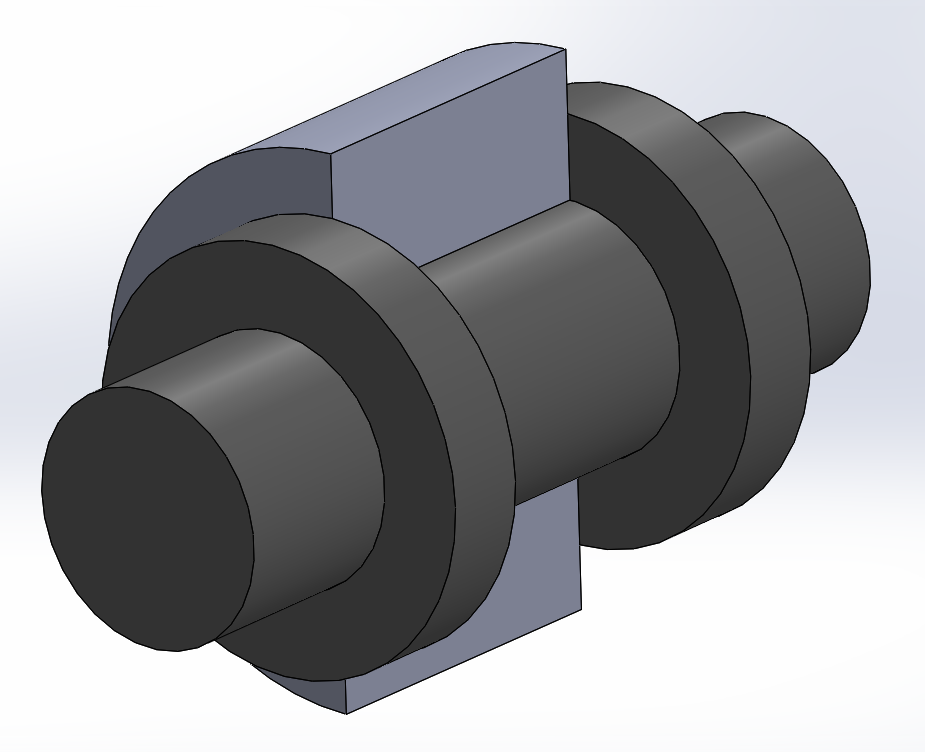|
Superstructure
A superstructure is an upward extension of an existing structure above a baseline. This term is applied to various kinds of physical structures such as buildings, bridges, or ships. Aboard ships and large boats On water craft, the superstructure consists of the parts of the ship or a boat, including sailboats, fishing boats, passenger ships, and submarines, that project above her main deck. This does not usually include its Mast (sailing), masts or any armament gun turret, turrets. Note that, in modern times, turrets do not always carry naval artillery. They can also carry missile launchers and/or antisubmarine warfare weapons. The size of a watercraft's superstructure can have many implications in the performance of ships and boats, since these structures can alter their structural rigidity, their displacements, and/or stability. These can be detrimental to any vessel's performance if they are taken into consideration incorrectly. The height and the weight of superstructure ... [...More Info...] [...Related Items...] OR: [Wikipedia] [Google] [Baidu] |
Ship Compartments
A ship is a large watercraft, vessel that travels the world's oceans and other Waterway, navigable waterways, carrying cargo or passengers, or in support of specialized missions, such as defense, research and fishing. Ships are generally distinguished from boats, based on size, shape, load capacity and purpose. Ships have supported Geographic exploration, exploration, Global trade, trade, Naval warfare, warfare, Human migration, migration, colonization, and science. Ship transport is responsible for the largest portion of world commerce. The word ''ship'' has meant, depending on the era and the context, either just a large vessel or specifically a Full-rigged ship, ship-rigged sailing ship with three or more masts, each of which is Square rig, square-rigged. The earliest historical evidence of boats is found in Egypt during the 4th millennium BCE. In 2024, ships had a global cargo capacity of 2.4 billion tons, with the three largest classes being ships carrying dry bulk (43%), ... [...More Info...] [...Related Items...] OR: [Wikipedia] [Google] [Baidu] |
Shipbuilding
Shipbuilding is the construction of ships and other Watercraft, floating vessels. In modern times, it normally takes place in a specialized facility known as a shipyard. Shipbuilders, also called shipwrights, follow a specialized occupation that traces its roots to before recorded history. Until recently, with the development of complex non-maritime technologies, a ship has often represented the most advanced structure that the society building it could produce. Some key industrial advances were developed to support shipbuilding, for instance the sawing of timbers by Saw#Mechanically powered saws, mechanical saws propelled by windmills in Dutch shipyards during the first half of the 17th century. The design process saw the early adoption of the logarithm (invented in 1615) to generate the curves used to produce the shape of a hull (watercraft), hull, especially when scaling up these curves accurately in the mould Lofting, loft. Shipbuilding and ship repairs, both commercial an ... [...More Info...] [...Related Items...] OR: [Wikipedia] [Google] [Baidu] |
MV Ascension In Port Canaveral
MV may refer to: Businesses and organizations In transportation * Motor vessel, a motorized ship; used as a prefix for ship names * MV Agusta, a motorcycle manufacturer based in Cascina Costa, Italy * Armenian International Airways (IATA code MV) * Metropolitan-Vickers, an electrical equipment and vehicle manufacturer * Midland Valley Railroad, United States (reporting mark MV) * Merchant vessel, ship prefix Other organizations * Mieterverband, a Swiss tenant organization * Millennium Volunteers, a former UK government initiative * Minnesota Vikings, an American football team * Miss Venezuela, a beauty pageant * Museum Victoria, an organization which operates three major state-owned museums in Melbourne, Victoria, Australia Places * Martha's Vineyard, an island located south of Cape Cod in Massachusetts * Maldives (ISO 3166-1 alpha-2 country code MV) * Mecklenburg-Vorpommern, a German state at the Baltic Sea * Mountain View, a city in California, US People * M. Visvesvaraya ... [...More Info...] [...Related Items...] OR: [Wikipedia] [Google] [Baidu] |
Waterline
The waterline is the line where the hull of a ship meets the surface of the water. A waterline can also refer to any line on a ship's hull that is parallel to the water's surface when the ship is afloat in a level trimmed position. Hence, waterlines are a class of "ships lines" used to denote the shape of a hull in naval architecture lines plans. The load line (also known as Plimsoll line) is the waterline which indicates the legal limit to which a ship may be loaded for specific water types and temperatures in order to safely maintain buoyancy. For vessels with displacement hulls, the hull speed is defined by, among other things, the waterline length. In a sailing boat, the waterline length can change significantly as the boat heels, and can dynamically affect the speed of the boat. Aircraft In the aircraft design the term ''waterline'' designates a horizontal reference line used in alignment checks. The base line of the aircraft is designated as waterline 0 (zero). ... [...More Info...] [...Related Items...] OR: [Wikipedia] [Google] [Baidu] |
Building Engineering
Architectural engineering or architecture engineering, also known as building engineering, is a Academic discipline, discipline that deals with the engineering and construction of buildings, such as environmental, structural, mechanical, electrical, computational, embeddable, and other research domains. It is related to Architecture, Mechatronics Engineering, Computer engineering, Computer Engineering, Aerospace engineering, Aerospace Engineering, and civil engineering, Civil Engineering, but distinguished from Interior design, Interior Design and architectural design, Architectural Design as an art and science of designing infrastructure through these various engineering disciplines, from which properly align with many related surrounding engineering advancements. From reduction of greenhouse gas emissions to the construction of resilient buildings, architectural engineers are at the forefront of addressing several major challenges of the 21st century. They apply the latest scie ... [...More Info...] [...Related Items...] OR: [Wikipedia] [Google] [Baidu] |
Base Isolation
Seismic base isolation, also known as base isolation, or base isolation system, is one of the most popular means of protecting a structure against earthquake forces. It is a collection of structural elements which should substantially Coupling (physics), decouple a superstructure from its Substructure (engineering), substructure that is in turn resting on the shaking ground, thus protecting a building or non-building structure's integrity. Base isolation is one of the most powerful tools of earthquake engineering pertaining to the passive structural vibration control technologies. The isolation can be obtained by the use of various techniques like rubber bearings, friction bearings, ball bearings, spring systems and other means. It is meant to enable a building or non-building structure to survive a potentially devastating seismic impact (mechanics), impact through a proper initial design or subsequent modifications. In some cases, application of base isolation can raise both ... [...More Info...] [...Related Items...] OR: [Wikipedia] [Google] [Baidu] |
Machinery
A machine is a physical system that uses power to apply forces and control movement to perform an action. The term is commonly applied to artificial devices, such as those employing engines or motors, but also to natural biological macromolecules, such as molecular machines. Machines can be driven by animals and people, by natural forces such as wind and water, and by chemical, thermal, or electrical power, and include a system of mechanisms that shape the actuator input to achieve a specific application of output forces and movement. They can also include computers and sensors that monitor performance and plan movement, often called mechanical systems. Renaissance natural philosophers identified six simple machines which were the elementary devices that put a load into motion, and calculated the ratio of output force to input force, known today as mechanical advantage. Modern machines are complex systems that consist of structural elements, mechanisms and control compo ... [...More Info...] [...Related Items...] OR: [Wikipedia] [Google] [Baidu] |
Mechanism (engineering)
In engineering, a mechanism is a Machine, device that transforms input forces and movement into a desired set of output forces and movement. Mechanisms generally consist of moving components which may include Gears and gear trains; belt drive, Belts and chain drives; Cam (mechanism), cams and cam follower, followers; Linkage (mechanical), Linkages; Friction devices, such as brakes or clutches; Structural components such as a frame, fasteners, bearings, springs, or lubricants; Various machine elements, such as splines, pins, or keys. German scientist Franz Reuleaux defines ''machine'' as "a combination of resistant bodies so arranged that by their means the mechanical forces of nature can be compelled to do work accompanied by certain determinate motion". In this context, his use of ''machine'' is generally interpreted to mean ''mechanism''. The combination of force and movement defines Power (physics), power, and a mechanism manages power to achieve a desired set of forces and ... [...More Info...] [...Related Items...] OR: [Wikipedia] [Google] [Baidu] |
Civil Engineering
Civil engineering is a regulation and licensure in engineering, professional engineering discipline that deals with the design, construction, and maintenance of the physical and naturally built environment, including public works such as roads, bridges, canals, dams, airports, sewage systems, pipelines, structural element, structural components of buildings, and railways. Civil engineering is traditionally broken into a number of sub-disciplines. It is considered the second-oldest engineering discipline after military engineering, and it is defined to distinguish non-military engineering from military engineering. Civil engineering can take place in the public sector from municipal public works departments through to federal government agencies, and in the private sector from locally based firms to Fortune Global 500, ''Fortune'' Global 500 companies. History Civil engineering as a discipline Civil engineering is the application of physical and scientific principles for solv ... [...More Info...] [...Related Items...] OR: [Wikipedia] [Google] [Baidu] |
Foundation (engineering)
In engineering, a foundation is the element of a structural engineering, structure which connects it to the ground or more rarely, water (as with Floating building, floating structures), transferring force, loads from the structure to the ground. Foundations are generally considered either Shallow foundation, shallow or Deep foundation, deep. Foundation engineering is the application of soil mechanics and rock mechanics (geotechnical engineering) in the design of foundation elements of structures. Purpose Foundations provide the structure's stability from the ground: * To distribute the weight of the structure over a large area in order to avoid overloading the underlying soil (possibly causing unequal settlement). * To anchor the structure against natural forces including earthquakes, floods, droughts, frost heaves, tornadoes and wind. * To provide a level surface for construction. * To anchor the structure deeply into the ground, increasing its stability and preventing over ... [...More Info...] [...Related Items...] OR: [Wikipedia] [Google] [Baidu] |
Seismic Performance
Seismology (; from Ancient Greek σεισμός (''seismós'') meaning "earthquake" and -λογία (''-logía'') meaning "study of") is the scientific study of earthquakes (or generally, quake (natural phenomenon), quakes) and the generation and propagation of Linear elasticity#Elastic wave, elastic waves through planetary body, planetary bodies. It also includes studies of the earthquake environmental effects, environmental effects of earthquakes such as tsunamis; other seismic sources such as volcanoes, plate tectonics, glaciers, Fluvial seismology, rivers, oceanic microseisms, and the atmosphere; and induced seismicity, artificial processes such as explosions. Paleoseismology is a related field that uses geology to infer information regarding past earthquakes. A recording of Earth's motion as a function of time, created by a seismograph is called a seismogram. A seismologist is a scientist who works in basic or applied seismology. History Scholarly interest in earthquakes c ... [...More Info...] [...Related Items...] OR: [Wikipedia] [Google] [Baidu] |









